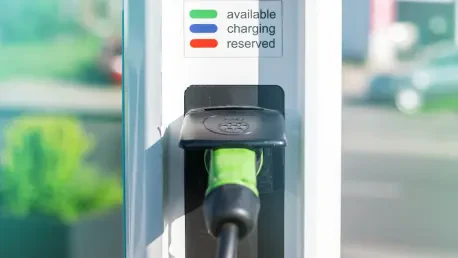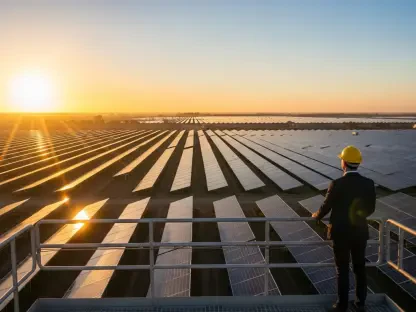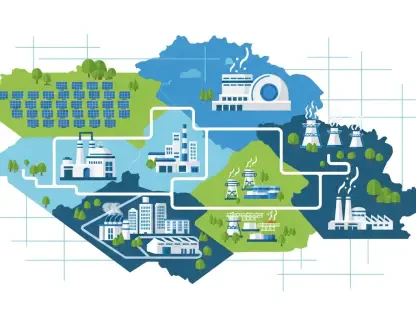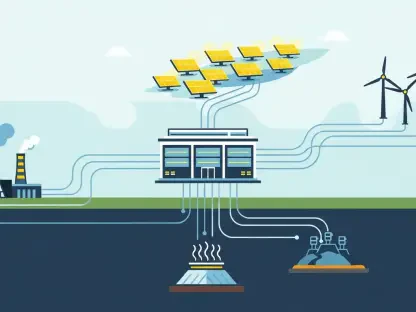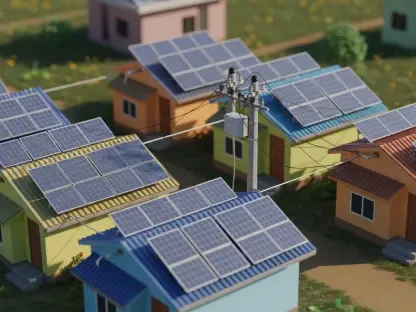In an era where renewable energy and electric vehicles are at the forefront of transforming our transportation landscape, Christopher Hailstone provides essential expertise in energy management and electric infrastructure. With vast experience in electricity delivery and grid reliability, he offers insights into a new policy in Uttar Pradesh that aims to expand EV charging infrastructure using vacant government land. This initiative is a response to the increasing demand for charging facilities as the number of electric vehicles continues to grow rapidly across the state.
Can you explain the new policy regarding the use of vacant government land for electric vehicle charging stations in Uttar Pradesh?
The new policy aims to mandate government departments, corporations, development authorities, and civic bodies to make their unused land available for electric vehicle charging stations. This measure is crucial as it seeks to address the shortage of accessible land, which has been a barrier for expanding EV charging infrastructure. By utilizing vacant government land, the state aims to facilitate rapid development of necessary facilities to support its expanding EV ecosystem.
What has motivated the Uttar Pradesh government to propose this policy now?
The motivation comes from the stark gap between the growing number of electric vehicles and the insufficient number of available charging stations. As the popularity of EVs surges, particularly in urban areas and along highways, there’s an urgent need to provide adequate charging infrastructure. This policy emerges as a proactive solution to accommodate future demand and support the state’s sustainability goals.
How does the shortage of land currently affect private developers in setting up EV charging stations?
Private developers have faced significant obstacles in finding suitable land for setting up charging stations, which has hindered the pace of infrastructure development. The scarcity of accessible land has slowed down the deployment of charging facilities, creating bottlenecks in meeting the increasing demand from EV users across the state.
What steps will be taken to implement this policy effectively across various government departments and agencies?
For effective implementation, the policy will require coordinated efforts from all involved government departments and agencies. Clear guidelines and collaboration mechanisms will be essential to ensure that land can be allocated promptly and efficiently. This will involve detailed planning and interdepartmental communication to facilitate the smooth execution of the policy.
Is there an expected timeline for cabinet approval of this policy?
Cabinet approval for the policy is anticipated soon, although an exact timeline hasn’t been specified. Given the urgency of the matter, it’s expected that the government will prioritize this policy to kickstart the expansion of charging infrastructure.
How does this policy fit into the Ministry of Power’s goal for a widespread charging network by 2030?
The policy aligns perfectly with the Ministry of Power’s target of establishing a widespread and reliable charging network by 2030. By utilizing public land for charging stations, the policy supports the overarching goal of ensuring that EV users have convenient access to charging facilities throughout the state, including along key transit routes and in urban centers.
What plans are in place to ensure charging stations are conveniently placed in cities and along highways?
The strategy involves placing charging stations at regular intervals to guarantee that they’re easily accessible in both cities and along major highways. This is intended to cater to all types of electric vehicles, including heavier ones like buses and trucks, ensuring comprehensive coverage for EV users.
Can you elaborate on the proposed revenue-sharing model with private developers when using public land?
The proposed revenue-sharing model will allow public agencies that own the land to receive a portion of the proceeds from electricity usage generated by the charging stations. This is designed to incentivize public entities to support the use of their land while also providing a sustainable financial framework for collaborating with private developers.
How will the Uttar Pradesh Renewable and EV Infrastructure Ltd contribute to the development of EV charging facilities?
Uttar Pradesh Renewable and EV Infrastructure Ltd is tasked with developing and maintaining EV charging facilities in power distribution zones, along highways, and in urban areas. Operating under guidelines from the central government, this company will play a pivotal role in building an efficient and widespread charging network across the state.
With over 12.5 lakh electric vehicles registered, how is the state planning to accommodate an anticipated tenfold increase by 2030?
The state plans to accommodate this projected increase by aggressively expanding its charging infrastructure and ensuring seamless access to charging facilities. The new policy, part of broader sustainability efforts, seeks to provide the necessary support system to handle the anticipated growth in EV numbers by increasing charging capacity and coverage.
What are the main challenges you’ve identified in developing a robust EV infrastructure in Uttar Pradesh?
The most significant challenge has been the availability of land for charging station installation. Additionally, coordinating efforts across various government bodies and ensuring the timely deployment of infrastructure presents logistical challenges. Overcoming these hurdles is vital for establishing a robust and dependable EV charging network.
How does the government plan to replace its vehicle fleet with electric vehicles by 2030?
By committing to replace its entire vehicle fleet with electric vehicles, the government is setting an example of sustainability and transition to clean energy. This initiative involves phased procurement and substitution strategies to ensure that the transition is smooth while maintaining operational efficiency.
Are there any additional sustainability efforts related to EV infrastructure that the state is undertaking?
Beyond expanding infrastructure, the state is focused on integrating renewable energy sources into the grid and optimizing energy management to support the sustainability of its growing EV ecosystem. These efforts include promoting energy efficiency and reducing the carbon footprint associated with electric vehicle usage.
How does the new policy aim to address obstacles previously faced in expanding EV infrastructure?
By making vacant government land available, the policy removes a primary hurdle of land unavailability, easing the path for developers to establish needed charging stations. This approach seeks to streamline the expansion process and reduce the time and effort previously required to secure suitable locations.
In what ways does the involvement of private developers in public land usage benefit the state’s EV ecosystem?
Engaging private developers allows for more efficient and quicker deployment of charging stations, leveraging private sector expertise and resources. It enriches the ecosystem by bringing in innovative solutions, fostering competition, and accelerating infrastructure expansion necessary for an evolving EV market.
Do you have any advice for our readers?
It’s imperative to stay informed and adaptable in the rapidly advancing field of renewable energy and electric mobility. For those involved in or entering the sector, focusing on collaboration and exploring innovative approaches will be key to contributing positively to sustainable urban mobility solutions.
